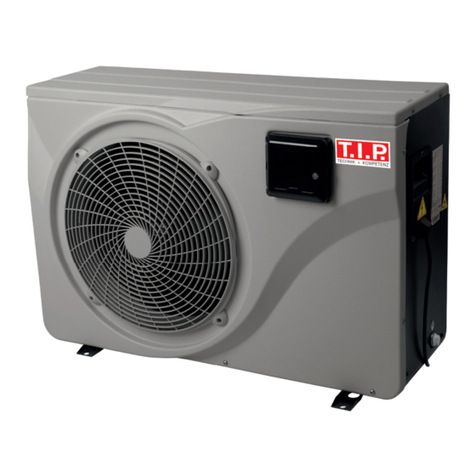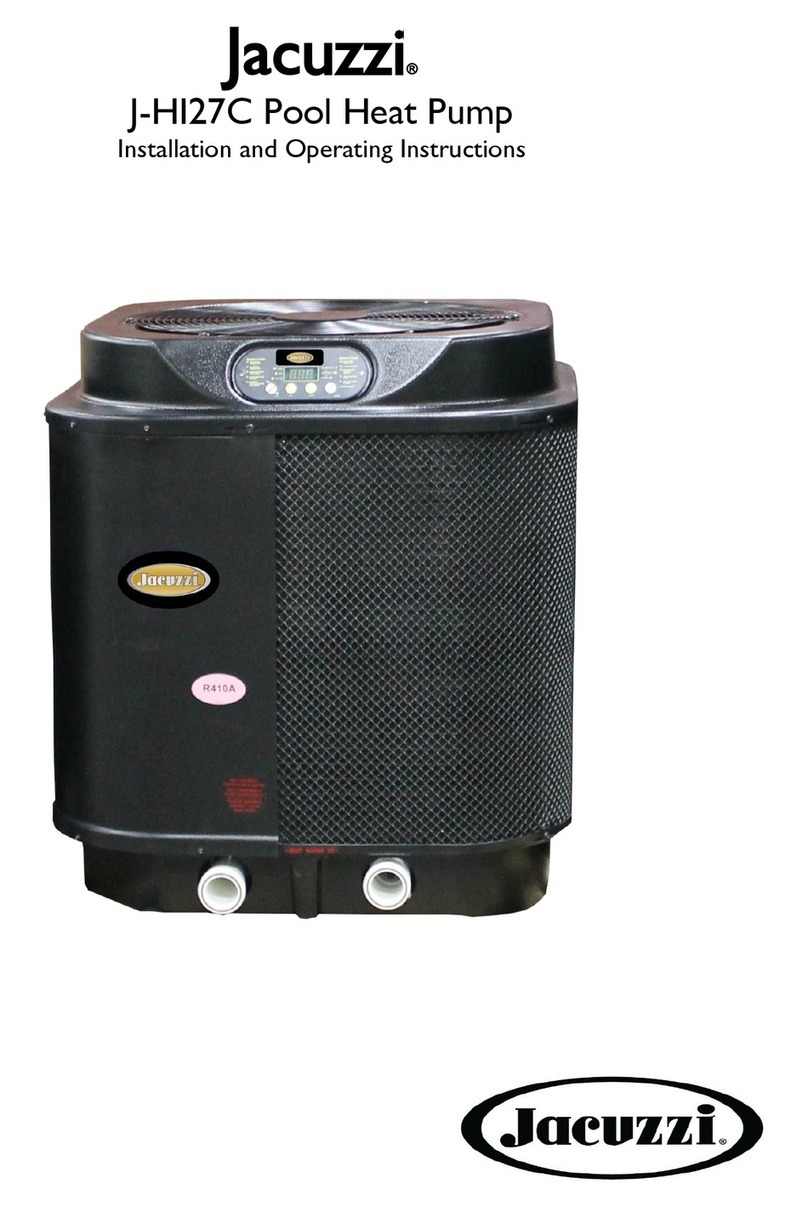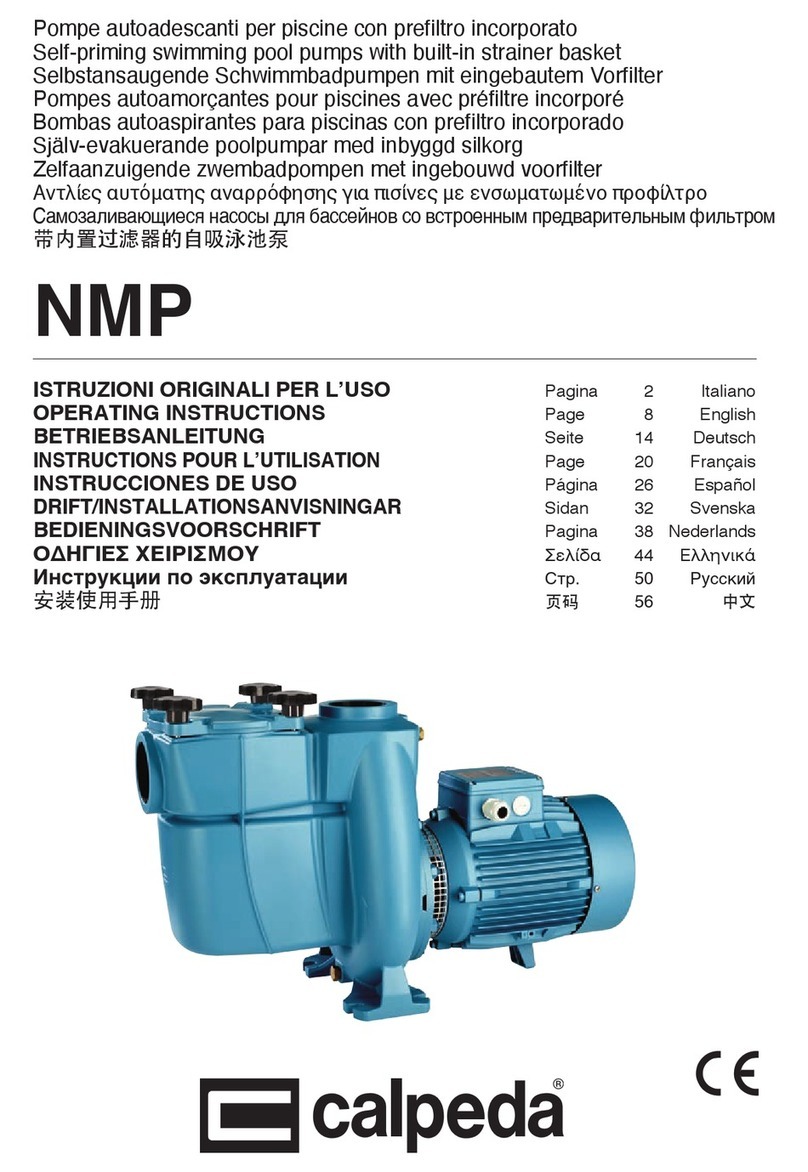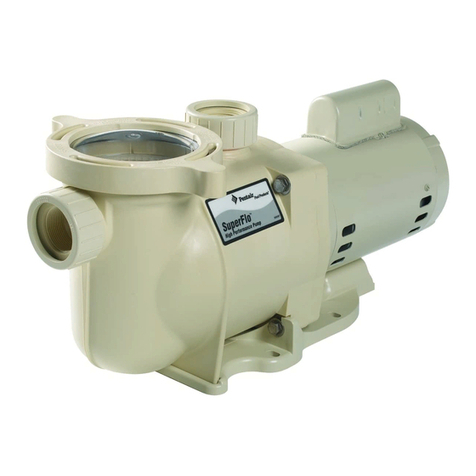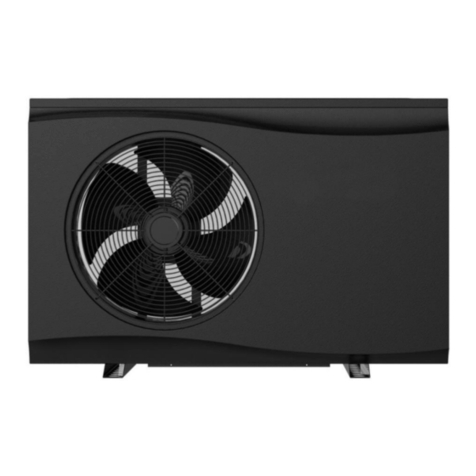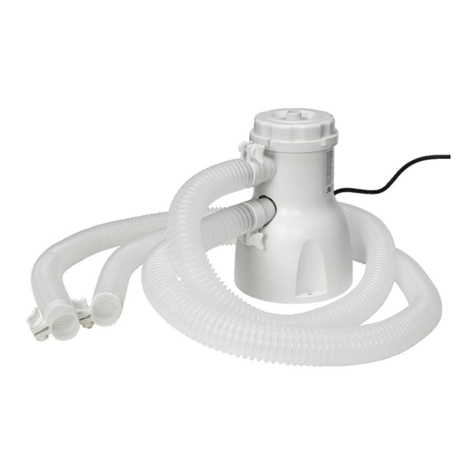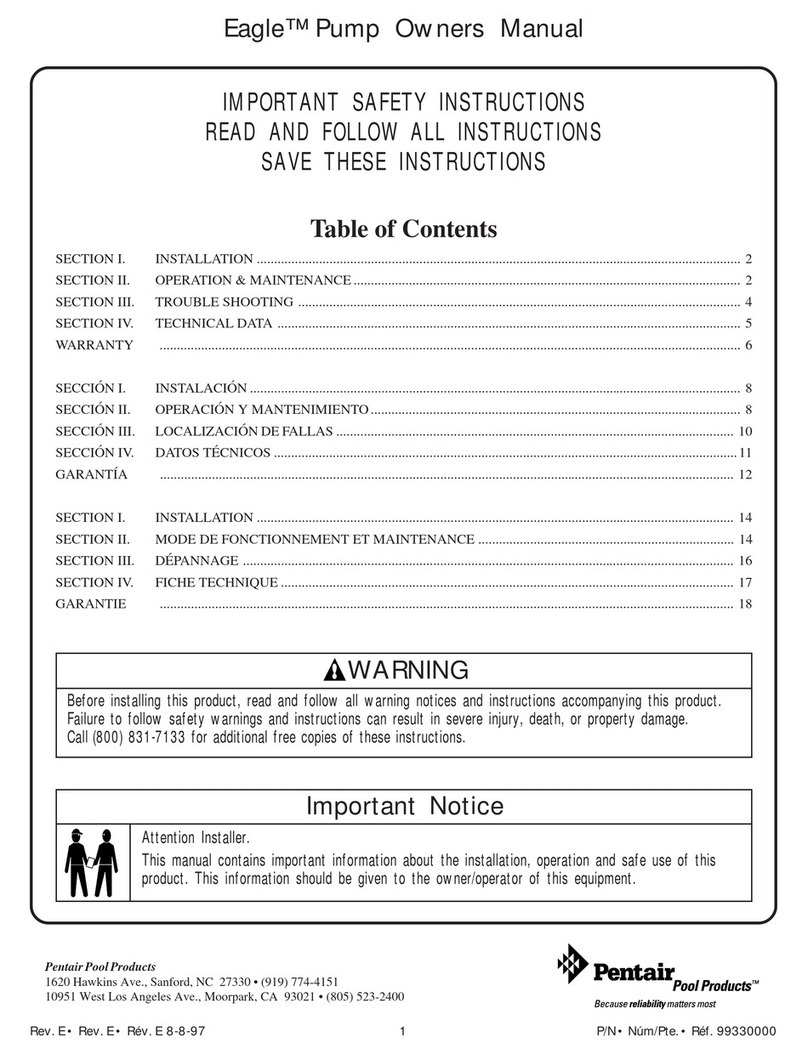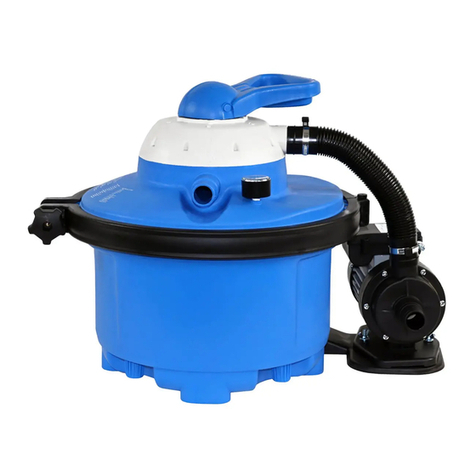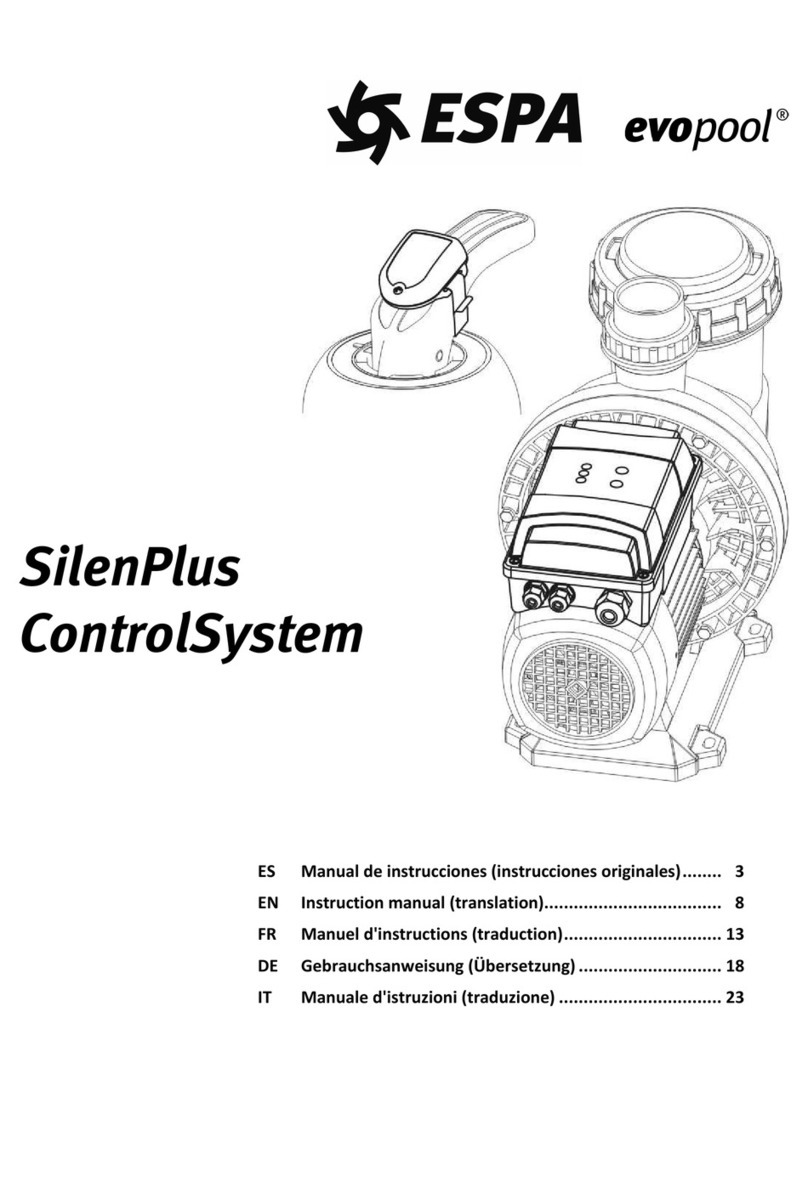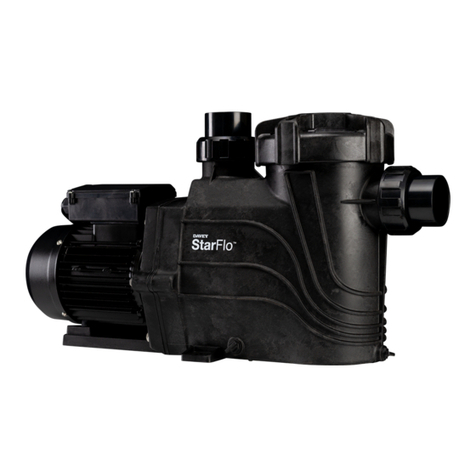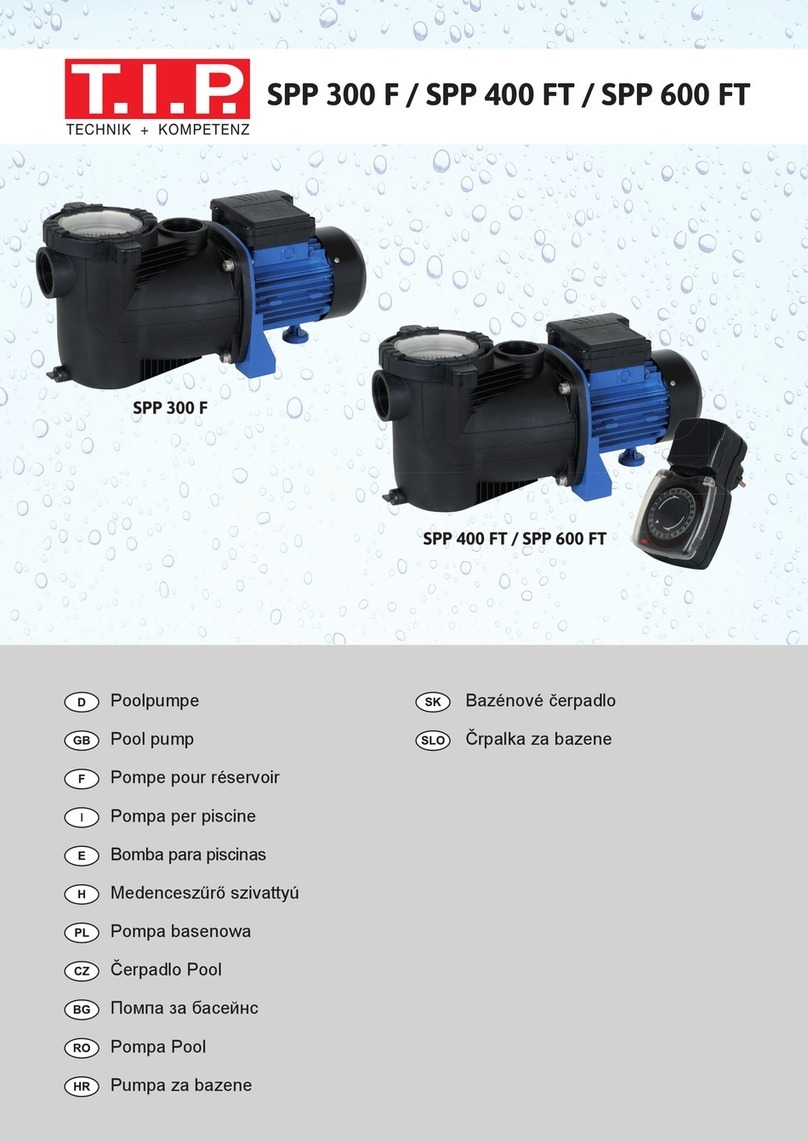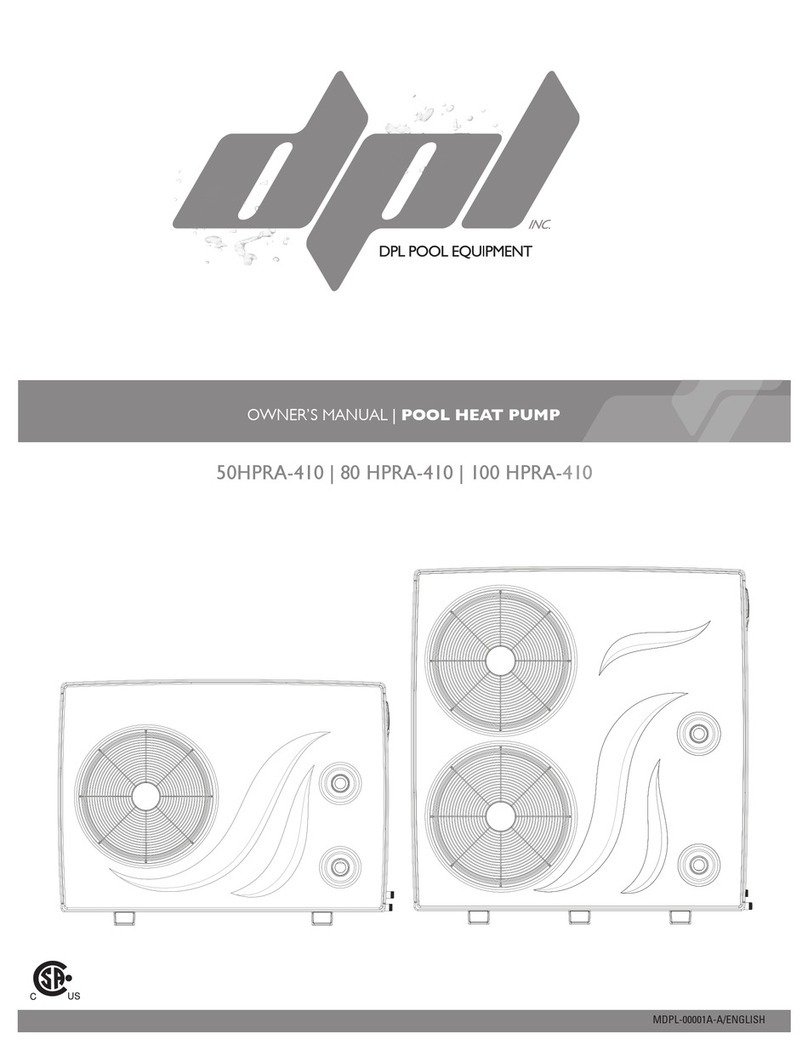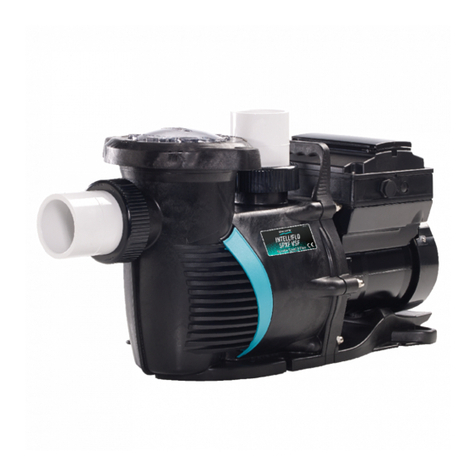
ADVERTENCIAS A TENER PRESENTES
Durante la conexión de los cables eléctricos
al motor de la máquina, conectar el motor
siguiendo el esquema eléctrico adjunto a la
máquina.
El equipo debe conectarse a una toma de
corriente, con conexión a tierra, protegido
con un interruptor diferencial (RCD) con
una corriente de funcionamiento residual
asignado que no exceda de 30 mA.
No utilizar los instalaciones de baño
mientras el equipo de bombeo esté en
funcionamiento. No utilizar la boma en caso
que las personas estén en contacto con agua.
Tener en cuenta los reglamentaciones de
instalaciones nacionales para el montaje e
instalación de las bombas.
Evitar en todo momento el contacto, incluso
accidental, con los portes moviles de la
máquina durante el funcionamiento de lo
mismo y/o antes de su parada total.
Desconectar la máquina de la red de
alimentación y bloquear los dispositivos
Efectuar la instalación de acuerdo con las
indicaciones particulares de cada instalación.
Respetar las normas vigentes para la
prevención de accidentes.
Al efectuar el trabajo sobre cada máquina
o sobre los equipos a ella ligada, hay que
desconectar el equipo de la red eléctrica de
alimentación y los dispositivos de arranque,
ya que durante el funcionamiento las partes
eléctricas de la bomba se encuentran bajo
tensión.
Los trabajos de montaje y mantenimiento
deben ser llevados a cabo por personas
cualificadas y autorizadas, y que éstas hayan
leído previamente de forma detenida las
instrucciones de instalación y servicio.
Instalación y montaje
GENERAL
El montaje e instalación de nuestras bombas,
solo está permitido en piscinas o estanques
que cumplan con la norma HD 384.7.702.
En supuestos dudosos, consultar a su
especialista.
Todas las bombas están provistas de un pie
con taladros para poder sujetarlas en el
suelo mediante un anclaje.
EMPLAZAMIENTO
Montar la bomba por debajo del nivel del
agua de la piscina o estanque para mejorar
el rendimiento de las bombas.
En caso de tener que instalar una bomba
autoaspirante por encima del nivel del agua,
el diferencial de presión a la aspiración de
la bomba no debe ser superior a 0,02 MPa
(2mH2O), procurando que el conducto de
de puesta en marcha, antes de proceder o
cualquier intervención de mantenimiento
eléctrico o mecánico.
Estas advertencias son informativas ya que
pueden existir otras normas de seguridad
específicas en normativas particulares de
cada región.
La instalación eléctrica debe ser hecha
por personal profesional cualificado en
instalaciones eléctricos. Éste equipo no esta
destinado a personas con discapacidades
físicas, sensoriales o mentales reducidos o
sin experiencia, o no ser que hayan tenido
supervisión o instrucciones acerca de su uso
por un responsable de seguridad.
No permita ni a niños ni a adultos apoyarse
o sentarse sobre el aparato. Los niños deben
ser supervisados para asegurar que no
juegan con el equipo.
